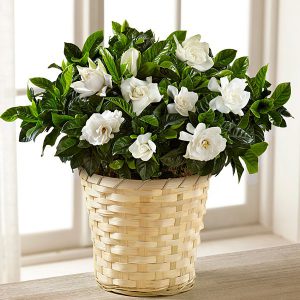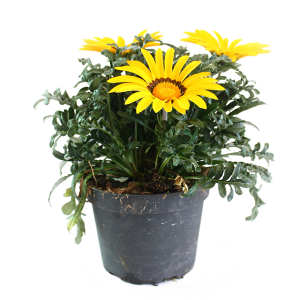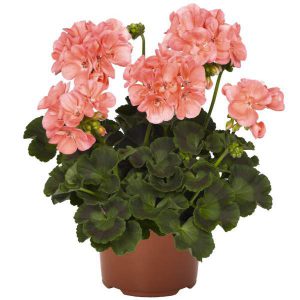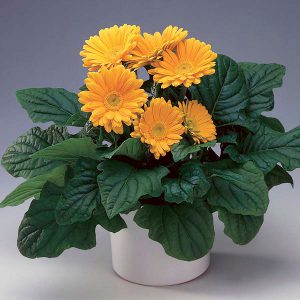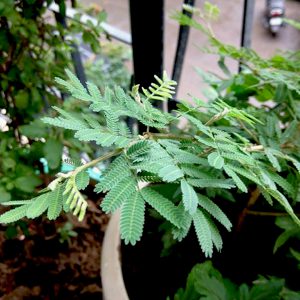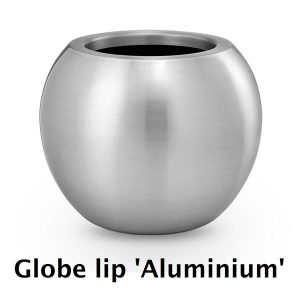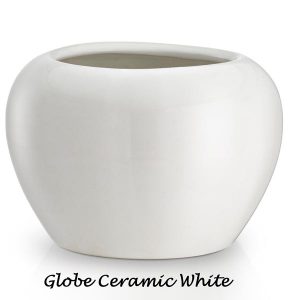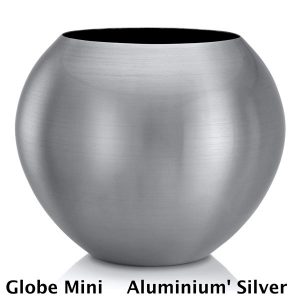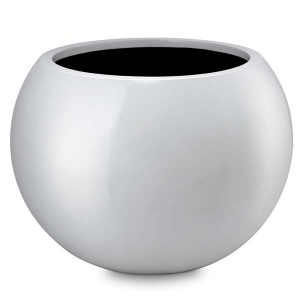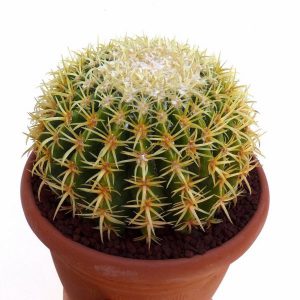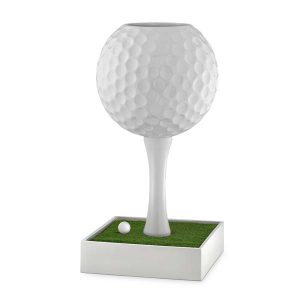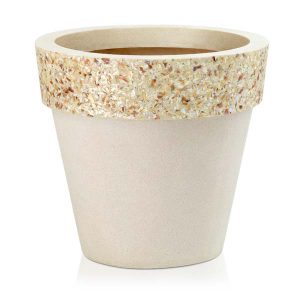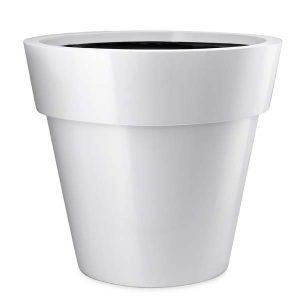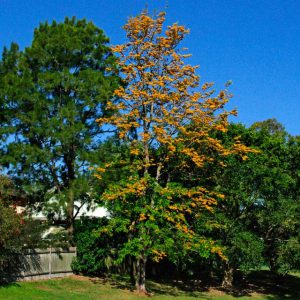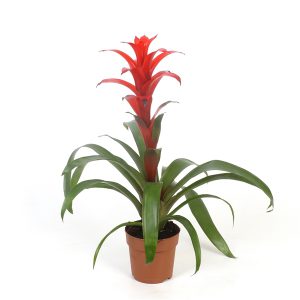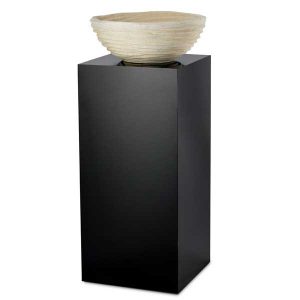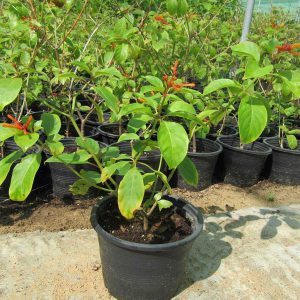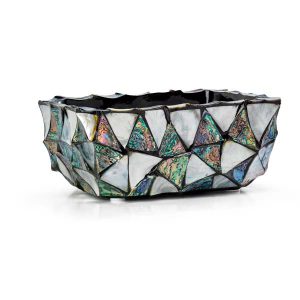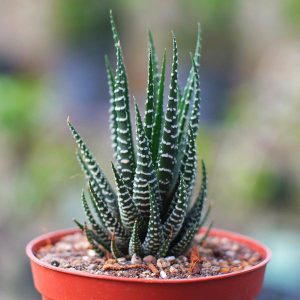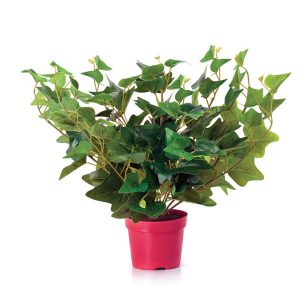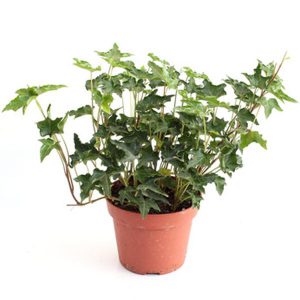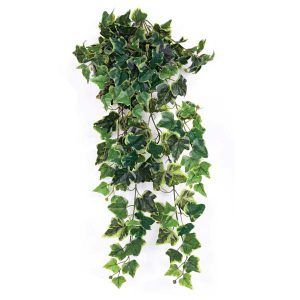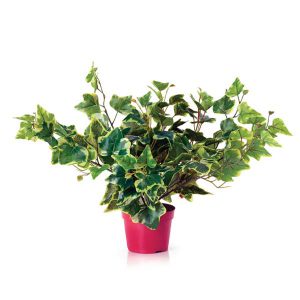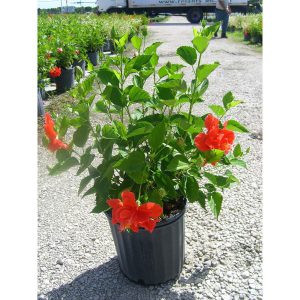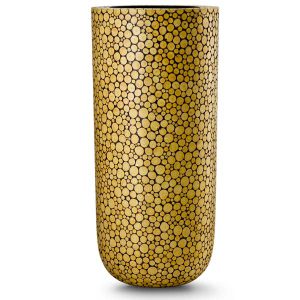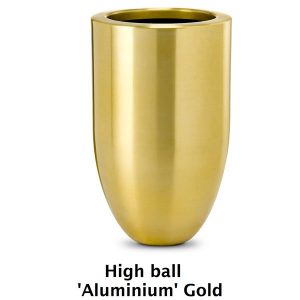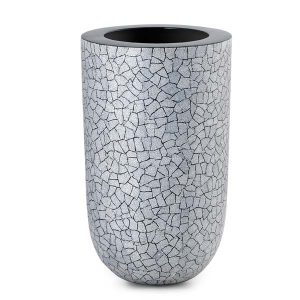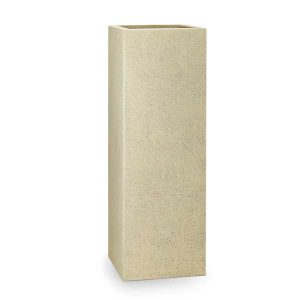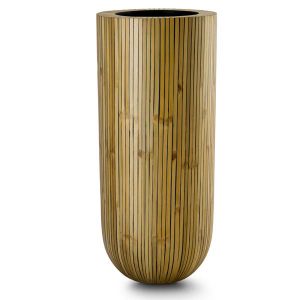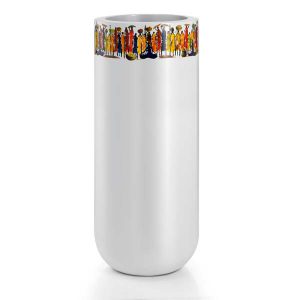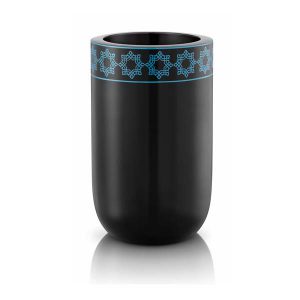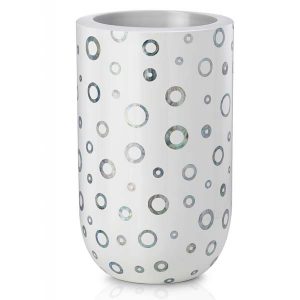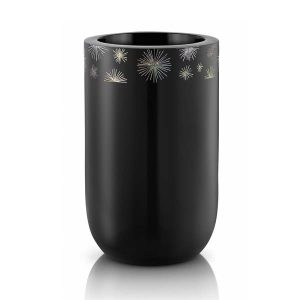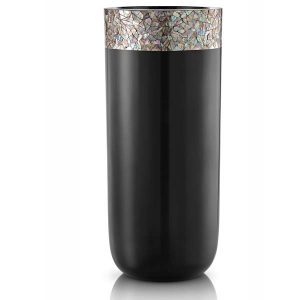Shop
Gardenia
Gardenias are native to the tropical and subtropical regions of Africa, southern Asia, Australasia and Oceania. This species can be difficult to grow elsewhere because it demands high humidity to thrive and bright (not direct) light. Some types of gardenias can be grown as houseplants
- Gardenia plants need high humidity.
- A loose, well-drained organic soil is recommended.
- Do not over-water gardenias.
- Fertilize with an acid fertilizer.
AED 50.00Add to cart
Gardenia Flowering Plant With Terracotta pot
AED 120.00 Original price was: AED 120.00.AED 100.00Current price is: AED 100.00.Add to cart
Gardenia Flowering Plant With Terracotta pot
One number of Gardenia flowering plant 25cm to 30cm ht arranged in small Terracotta pot with soil mixtures
AED 120.00 Original price was: AED 120.00.AED 100.00Current price is: AED 100.00.Add to cart
gazania rigens
gazania rigens
Grow in sandy to average, well-drained soils in full sun. Tolerates some soil dryness, but prefers consistent moisture. Do not overwater, however. Deadhead spent flowers to encourage additional bloom. Winter hardy to USDA Zones 9-11. Grow as annuals in St. Louis, either in the ground or in containers. Prefers cool summer climates, and flowering may slow down considerably in hot and humid St. Louis summers. If growing from seed, start plants indoors in late winter (6-8 weeks before last frost date) and set plants outside after last frost date. Take basal offsets from favorite plants in late summer to early fall for rooting and subsequent overwintering indoors in pots. Container plants may also be brought inside for winter.
AED 5.00Add to cart
geranium
Whether indoors or out, geranium care is pretty basic. In addition to watering, which should be done deeply and once the soil begins to feel dry indoors or at least weekly outdoors (though potted plants may need daily watering in hot weather), fertilizing is usually necessary. Use a water-soluble houseplant fertilizer or a 5-10-5 fertilizer with additional organic matter every four to six weeks throughout their active growing season. Indoor or potted plants may require repotting once they become overgrown, usually noted by wilting between waterings. Regular deadheading of spent blooms will also help encourage additional blooming. When watering outdoor plants, it’s best to avoid overhead irrigation, as this can lead to pests or disease issues. Geranium plants root easily from cuttings and can be propagated in fall for overwintering of outdoor plants. They can also be dug up and brought inside.
AED 10.00Read more
Gerbera daisy
Gerbera daisies are susceptible to fungal diseases, although older varieties less so. Fungal sprays do not generally prevent crown rot, so correct planting and watering are essential for gerbera daisy care. Make sure you plant them with adequate spacing and in high light areas. A little bit of light shade in high summer is alright, but without full, direct light the plants will get leggy and pale and not produce nearly as many blooms. Water in the morning so leaves can dry out during the day to lessen the risk of rot and fungal diseases. Gerbera daisy care can also be enhanced by using a micro-nutrient liquid fertilizer such as a seaweed or fish emulsion. Keep an eye out for caterpillars and leaf miners too. Spray, if needed, with an organic spray such as pyrethrum or neem oil. Growing gerbera daisies can have some challenges, but it is a wonderful reward when those big, happy flowers bloom.
AED 20.00Add to cart
Gerbera Yellow ‘Real Feel’
Gerbera Yellow ‘Real Feel’
The flowering plants (angiosperms), are the most diverse group of land plants. The first flowering plants known to exist are from 160 million years ago. They diversified enormously during the Lower Cretaceous and became widespread around 120 million years ago. It is generally assumed that the function of flowers, from the start, was to involve animals in their reproduction processes.
By so doing plants greatly improved their reproductive efficiency and genetic diversity. Many animals contribute, insects, birds, bats monkey’s etc. interestingly red flowers will be pollinated by animals that can see ‘red’ in the spectrum, (like birds and monkeys). Rarely will they be pollinated by insects which can see ultraviolet, but not red.
AED 100.00Add to cart
Ghaf national tree of uae (prosopis cineraria)
Ghaf trees (Prosopis cineraria) of UAE are considered as the National tree of UAE. In Abu Dhabi they are seen in the north eastern part of the Emirate. They are the largest trees in the sand sheets and dunes which depend on ground water for its survival. They have striated trunk, bipinnate leaves and have small thorns at the younger stage. The flowers are yellow and fruit is a pod which encloses several seeds.
The ghaf trees are a part of tradition and culture of UAE. The leaves are used as fodder, and also used as salad as they are rich source of protein; the honey from the flowers is of high quality. They have been used traditionally for medicinal purposes as well. They provide shade and shelter for humans and animals. They provide microhabitat for plants, birds and insects. Birds such as eagle owl and ravens built their nest on the tree
AED 90.00Add to cart
Golden Barrel Cactus
Echinocactus grusonii, popularly known as the golden barrel cactus, golden ball or mother-in-law’s cushion, is a well known species of cactus, and is endemic to east-central Mexico
- Keep your cactus at low to moderate temperatures averaging between 50 and 75℉ during the day. …
- The golden barrel cactus grows best when given plenty of sunlight. …
- During warm months, you should water your golden barrel cactus on a regular basis whenever you start to notice the soil drying out.
AED 40.00Add to cart
grevillea roobusta (silk oak tree)
This is a fast-growing, single-stemmed, semi-deciduous tree, losing most of its leaves just before flowering. The bark is dark grey and furrowed in a lace-like pattern. The leaves can be over 30 cm long, fern-like, green on the upper surface and pale and silky below. The bright orange flowers are borne in many pairs along flower spikes. The flowers produce plenty of nectar so is very attractive to birds, bees and other insects. Height 25m Spread 15m.
Guzmania Red ‘Real Feel’
Guzmania Red ‘Real Feel’
The flowering plants (angiosperms), are the most diverse group of land plants. The first flowering plants known to exist are from 160 million years ago. They diversified enormously during the Lower Cretaceous and became widespread around 120 million years ago. It is generally assumed that the function of flowers, from the start, was to involve animals in their reproduction processes.
By so doing plants greatly improved their reproductive efficiency and genetic diversity. Many animals contribute, insects, birds, bats monkey’s etc. interestingly red flowers will be pollinated by animals that can see ‘red’ in the spectrum, (like birds and monkeys). Rarely will they be pollinated by insects which can see ultraviolet, but not red.
AED 100.00Add to cart
guzmania torch
Light:
Like the other bromeliads, Guzmanias prefer and are happiest in bright, natural light. An east or west exposure would be best but just be sure they avoid exposure to any direct, hot sun because they’ll burn. They’ll be fine in low light for a few weeks, but they won’t be as long lasting. If you want them for the long haul & have them produce pups, bright light is the ticket.
Water:
Guzmanias have a tank, cup, vase or urn (the central well which the flower stalk arises out of) which is how they collect a lot of the water they need. You want to keep that vase about 1/4 of the way full of water & flush it out with fresh water every 1-2 months to avoid any build up of bacteria.
Keep even less water in the tank if you have low light &/or cool temps. You don’t want the plant to rot out. I let the cup go dry for 2-7 days before I refill with a little water.Because moisture is collected through their leaves, they’d appreciate a spraying or misting once or twice a week. I also moisten the growing medium every 1-2 months depending on the temperatures and the season. Like all houseplants, you want to water less in the late fall through winter.
AED 55.00Add to cart
hamelia patens
Light: Does best in full sun but quite well in partial shade. It becomes leggy in shade.Moisture: Once established, firebush is drought tolerant, but it does best with frequent watering as long as the soil has excellent drainage. Water weekly during the first year after transplanting.Hardiness: USDA Zones 8 – 11. Firebush is like coral bean: it is a semi-woody shrub or small tree in zones 10-11, and a perennial that dies to the ground in winter and sprouts back in spring in zones 8-9. Firebush also is grown as an annual or a potted plant in colder zones.Propagation: Propagate by soft wood cuttings in spring or by seed.
Hamelia patens is an evergreen shrub, usually growing 1.8 – 3 metres tall, though sometimes becoming a tree up to 5 metres tall with a short bole around 8cm in diameter[
AED 15.00Add to cart
Haworthia
Will take various light conditions, but neither direct sunlight or deep shade. Direct sunlight can make the leaves of all Haworthia’s go an ugly purple or brown colour and deep shade tends to weaken the plant over a prolonged period.
Watering
A surviving plant will get by with watering just once a month, however to get the plant thriving it will need to be done at least once a fortnight. Very tolerant of underwatering, but will succumb quickly to rotting if overwatered.
Humidity
Not important.
Temperature
Average warmth between Spring and Autumn / Fall. Cooler in Winter although if possible, not “cold” and absolutely no lower than 4°C / 40°F
AED 40.00Add to cart
Hedera Green ‘Real Feel’
Hedera Green
We classify ‘filler plants’ as small plants typically used to cover the soil, either alone or in combination with ‘feature plants’.
These plants have been carefully selected once again, taking into account their ‘realistic’ appearance and feel. We have also ensured that different leaf textures, scale and colour (including degrees of green) are represented to give a wide and interesting choice. This selection would also play an important role in the development of green walls.
AED 100.00Add to cart
Hedera Green Trailing ‘Real Feel’
Hedera Green Trailing ‘Real Feel’
We classify ‘filler plants’ as small plants typically used to cover the soil, either alone or in combination with ‘feature plants’.
These plants have been carefully selected once again, taking into account their ‘realistic’ appearance and feel. We have also ensured that different leaf textures, scale and colour (including degrees of green) are represented to give a wide and interesting choice. This selection would also play an important role in the development of green walls.
AED 160.00Add to cart
Hedera Helix Hanging
English Ivy (Hedera helix) plants prefer an evenly moist environment. Water the plants freely during growth. Keep English Ivy houseplants moist in the winter. Spraying English Ivy with soft water weekly will help prevent spider mites from infesting the plants.
AED 40.00Add to cart
Hedera Variegated Trailing ‘Real Feel’
Hedera Variegated Trailing ‘Real Feel’
We classify ‘filler plants’ as small plants typically used to cover the soil, either alone or in combination with ‘feature plants’.
These plants have been carefully selected once again, taking into account their ‘realistic’ appearance and feel. We have also ensured that different leaf textures, scale and colour (including degrees of green) are represented to give a wide and interesting choice. This selection would also play an important role in the development of green walls.
AED 160.00Add to cart
Hedera Varigated ‘Real Feel’
Hedera Varigated ‘Real Feel’
We classify ‘filler plants’ as small plants typically used to cover the soil, either alone or in combination with ‘feature plants’.
These plants have been carefully selected once again, taking into account their ‘realistic’ appearance and feel. We have also ensured that different leaf textures, scale and colour (including degrees of green) are represented to give a wide and interesting choice. This selection would also play an important role in the development of green walls.
AED 100.00Add to cart
Heliconia olympic dreem
Tropical flowers never fail to astound and amaze with their forms and colors. Lobster claw plant (Heliconia rostrata) is no exception, with large, brightly hued bracts that cluster up a stem. Heliconia lobster claw is also called parrot flower and has inconsequential tiny flowers covered by the showy bracts. It is native to Central to South America and is hardy in the United States
AED 200.00Read more
Hibiscus
Select a site with full sun and well-drained soil. Hibiscus also adapt well to growing in containers.
Plant in spring, summer, or fall, spacing plants 3 to 6 feet apart. Dig a hole only as deep as the root ball and 2 to 3 times as wide. If your soil is in very poor condition, amend the soil you’ve removed from the hole with a small amount of compost. Otherwise don’t amend it at all. Carefully remove the plant from the container and set it in the hole. Fill the hole half full with soil, then water it well to settle the soil and eliminate air pockets. Let the water drain, then fill the remainder of hole with soil and water thoroughly.
Hibiscus require at least 1 inch of rain (or equivalent watering) each week. They like to be constantly moist, but not wet. Feed twice a month during the growing season and prune as necessary to control plant size and cut back errant branches. Cut branches back to just above a side shoot. Hibiscus are sensitive to cold and should be protected when temperatures dip into the 30s; container-grown plants should be brought indoors
AED 35.00Add to cart

